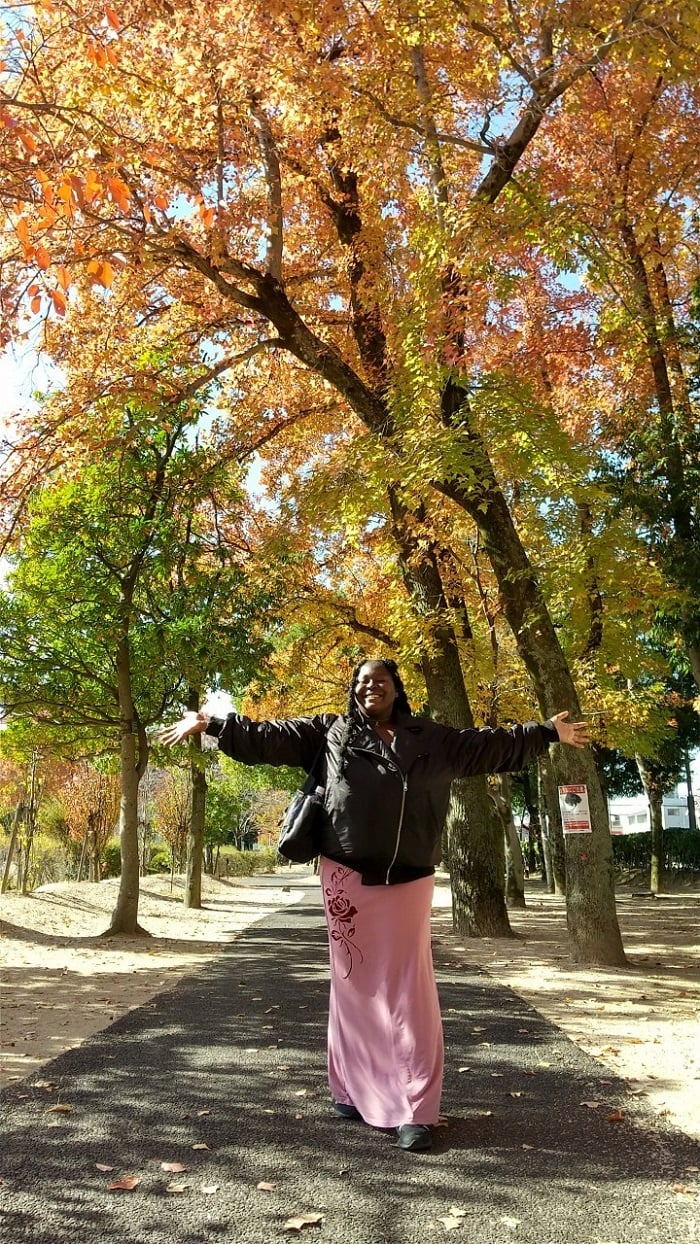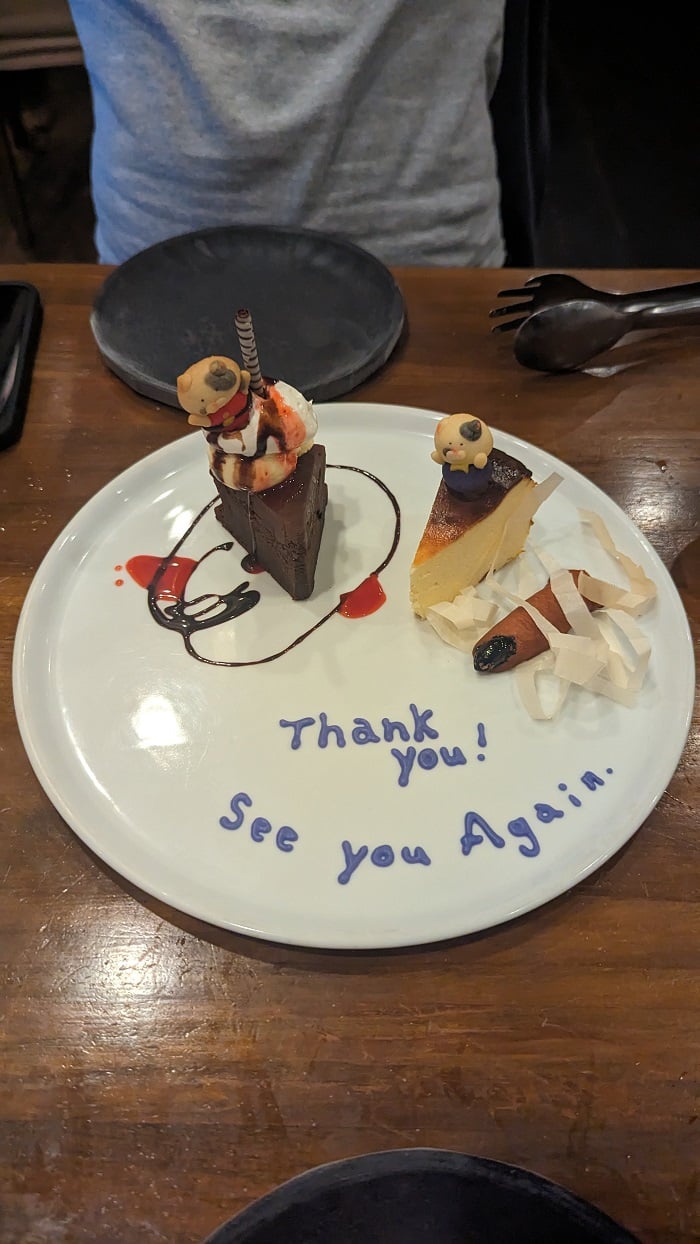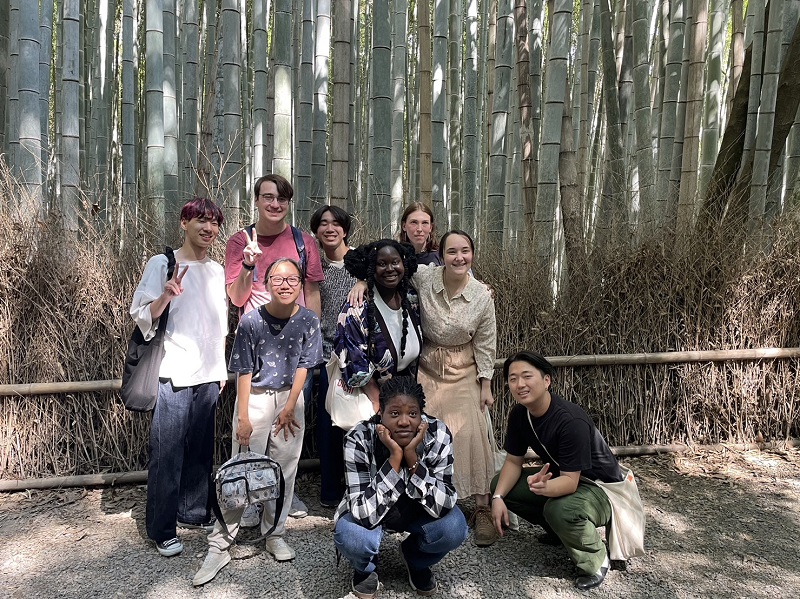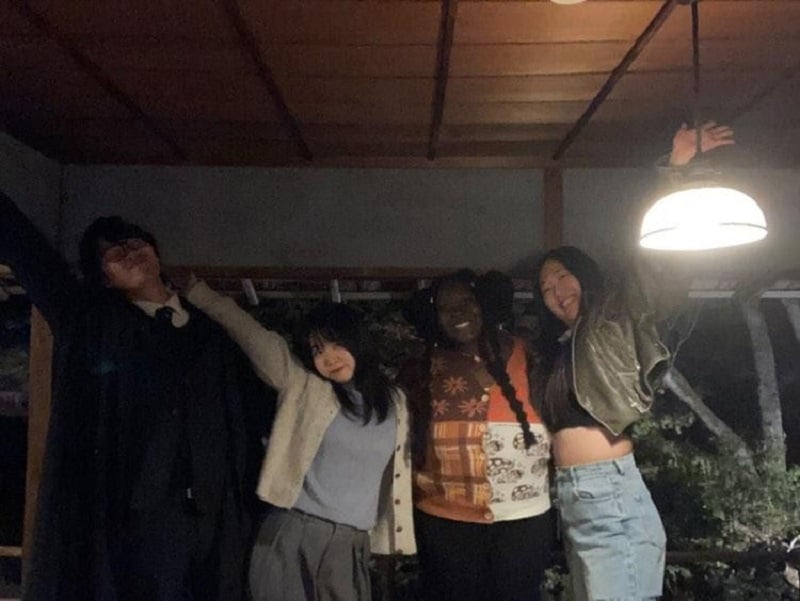Written by Angel Bryant (Howard University), Student Correspondent for CET Japan, Fall 2023
I still can’t believe I spent four months in Japan. I had always dreamed of going abroad, but when presented with the opportunity to study abroad in college, I hesitated. It wasn’t that I didn’t have the desire, but I didn’t have the money. It is a long common misconception that studying abroad is extremely expensive—and that may have been true at some point. However, today, there are a plethora of scholarships dedicated to helping students achieve their dreams. I am extremely grateful to have received several scholarships from my home institution, CET, Japan U.S. Friendship Commission, and the Benjamin A. Gilman Scholarship. With enough diligence and preparation, you too can study abroad completely for free like I did.

The spring semester may have cherry blossoms, but we get to enjoy 紅葉 Kōyō, or the changing of the leaves during autumn. There are many breathtaking sites to visit in Japan during this season.
But what do you do once you’re abroad? I had small experiences with Japanese culture before, but that would be nothing compared to living in Japan as a student. To prepare myself extra, I opted to take the complimentary Introduction to Japanese Culture course through CulturaGo. After studying abroad, I learned that, despite some uniquely Japanese things (like not having an oven but having a rice cooker), living in Japan is just like living anywhere else. The language and culture are different, but the golden thread that ties humanity together is also present. And I found that my Japanese housemates and I were far more alike than different. We bonded over games, beauty, fashion, music, anime, and cultural differences.

My special dessert from Vicolo. They handmade Sukuna’s finger for me because they knew I liked anime! Please visit them and tell them I sent you!
As part of my final blog, I wanted to revisit and update two of my blogs, starting with crafting your own spot list. My spot list is only restaurants, as Osaka is known as Japan’s kitchen, but that doesn’t have to be for you. As you settle down into your surroundings, your spot list won’t be that long. Mine ended as having:
- Vicolo Italian Restaurant near Kamishinjo Station – I ended up going here so much they remembered me and gave me a special dessert when I told them I was going home!
- Gong Cha – Boba (or tapioca in Japan). What more can I say?
- Yakiniku Like – A chain offering cheap yakiniku sets (hence yakiniku-like).
- Soba辰 – Near Kishibe Station, offers the delicious Tenzaru soba (soba with tempura on the side).
- JoJo Ramen – a Jojo’s Bizarre Adventure-themed ramen restaurant near Hommachi Station.
Dishonorable Mentions:
- A Happy Pancake – If you enjoy long waits for Japan’s famous souffle pancakes that taste like egg, then this is the place for you!
- Rikuro’s Cheesecake – Another famous Osaka spot that offers the jiggly cheesecake. It has an eggy taste with raisins on the bottom. Ew.
Next is The Hair Question. Within two weeks of posting that blog, I had three attempts at touching my hair, two being successful and without asking first. They all occurred on campus within the jurisdiction of CET. After just four months in Japan, I found this recurring situation tiring, so I spoke with CET staff about what could be done in the future to prevent these situations. Because of that experience, I wanted to revisit this blog to amend my first tip of finding your voice. I mainly focused on reactionary solutions, but you can (and should) be proactive, too.


(Left image) Your relationship with your housemates is a huge part of studying abroad. Don’t be afraid to reach out to them—they are just as interested in you as you are in them! (Right image) Visiting my friends in Niigata from a cultural exchange program I participated in was truly one of the highlights of my semester. Soon, I will be visiting my friends I made in Osaka as well!
To me, leaving is always harder than arriving. All of a sudden, you’re back home in your old routine, and your travels will seem like a distant memory. Reverse culture shock is also very real. I often find my eye twitching at things that are considered normal in the U.S., like talking on the train or approaching strangers like you’re both old friends. Car-dependent infrastructure, too (especially when I don’t have a car). It’s a readjustment, just like when I had to adjust to Japanese culture. However, during readjustment, I’m starting to learn and discover things about myself I didn’t notice when all I had was my own culture reflecting back at me. Some may discover Japan was not for them, and what they cherished most was at home all along. Some may realize a fire for traveling and learning about other cultures started within them, and they want to keep it going. That’s the beauty of the process, in my opinion.
For me, I’m already thinking about my next steps in deepening my relationship with Japan. Studying abroad does not have to be the end. In fact, it should be the very beginning of a lifelong journey for you.